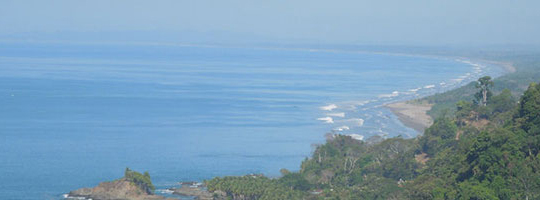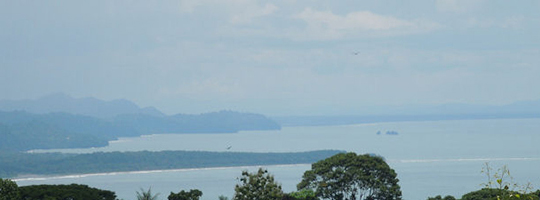Year In Review – 2013
January 9, 2014
Properties in Costa Rica
by Rod Martin
 The end of another year. Time for gratitude and reflection, both personal and professional. In terms of business, it allows us to chart this Costa Rica real estate market we deal with on a daily basis.
The end of another year. Time for gratitude and reflection, both personal and professional. In terms of business, it allows us to chart this Costa Rica real estate market we deal with on a daily basis.
After 5 years of trickling activity and decreasing property values, the “high season” (roughly the end of November thru March) saw an uptick. The big question on our minds this time last year was “will it continue throughout the year or will the market be slow until next “high season”. The answer… was resoundingly positive.
Sales are up
As you can see in the graphic (A1), the year over year increase in sales (think- buying) was 15%. Market movement/growth was basically flat lined for the previous 4+ years, so this upturn was encouraging news. The overall market is improving, but let’s look a little closer at the internal market dynamics.
Home sales led all categories on the Costa Ballena, a gorgeous stretch of coastline in the southern Pacific zone of Costa Rica. Not only was the number of sold houses impressive, but two luxury estates over $2,000,000 sold, as well. Although less than 50% of these new owners are relocating after their purchase, over 50% are smartly using it to generate revenue. The vacation rental market is very strong on the Pacific Coast. People want turn-key options, and this is not limited to affordable villas and luxury estates.
Six hotels sold on the Costa Ballena in 2013. These ranged from low budget hotels to those valued at over one million dollars. Like the vacation rental market, profitable hotels allow people a way to pay bills and, in some cases, start a new life!
I believe this is the first year that turn-key options (houses and hotels) have out numbered raw land sales, if only by one or two. One trend we often see is when house hunters can’t find the right home, they buy and build it! This is a smart strategy since you have the freedom of choice for location and design of the home.
More good news for buyers

Like the sunsets, the news just keeps getting better and, in fact, it’s two-fold. First, many home owners who have been sitting on the sideline now see the market picking up and are listing their houses with us. More listings = better selection. Second, property values are still low. As with any real estate market, there is a time delay between uptick in sales and stronger property values.
Purchase price vs. List price
As reflected in the second graphic (A2), many sellers are negotiable on their list price. The average sale price is 13% lower than the list price. Obviously, this varies depending on the sellers, their motivation, and fiscal elements like “all cash” or financing. As the market gets stronger, that percentage will disappear like the setting Sun over the Pacific.
The 2014 “high season” has already produced a lot of activity, and it’s no surprise. Fantastic properties at good prices… come take a look today!








 Here’s the progression… you visit the southern Pacific zone of Costa Rica, you fall in love with the southern Pacific zone of Costa Rica, you eventually
Here’s the progression… you visit the southern Pacific zone of Costa Rica, you fall in love with the southern Pacific zone of Costa Rica, you eventually  The world we live in today is streaming with Positive ions. But this saturation of positive ions due to the ever developing electronics in our homes and offices, the radiation we are exposed to on a daily basis and the chemical and pollution our bodies come in contact with, is actually not a positive thing. This abundance of positive ions contributes to an imbalance of the acid-alkaline levels within our bodies, thus contributing to free radicals which are believed to advance aging and the development of cancer.
The world we live in today is streaming with Positive ions. But this saturation of positive ions due to the ever developing electronics in our homes and offices, the radiation we are exposed to on a daily basis and the chemical and pollution our bodies come in contact with, is actually not a positive thing. This abundance of positive ions contributes to an imbalance of the acid-alkaline levels within our bodies, thus contributing to free radicals which are believed to advance aging and the development of cancer.